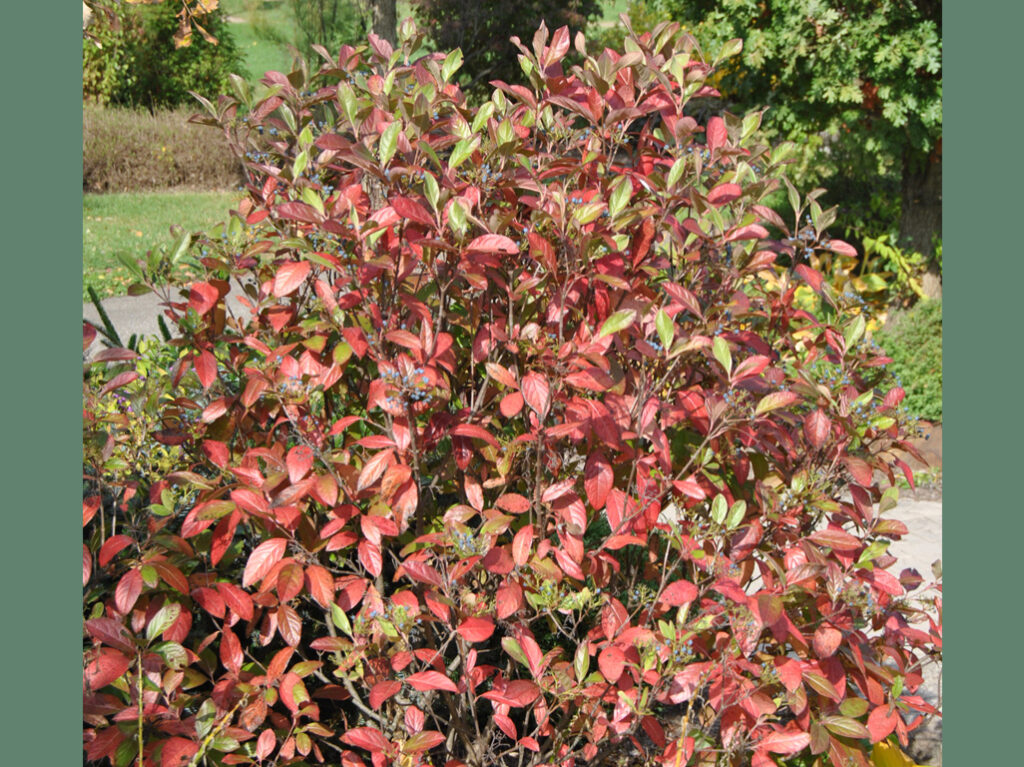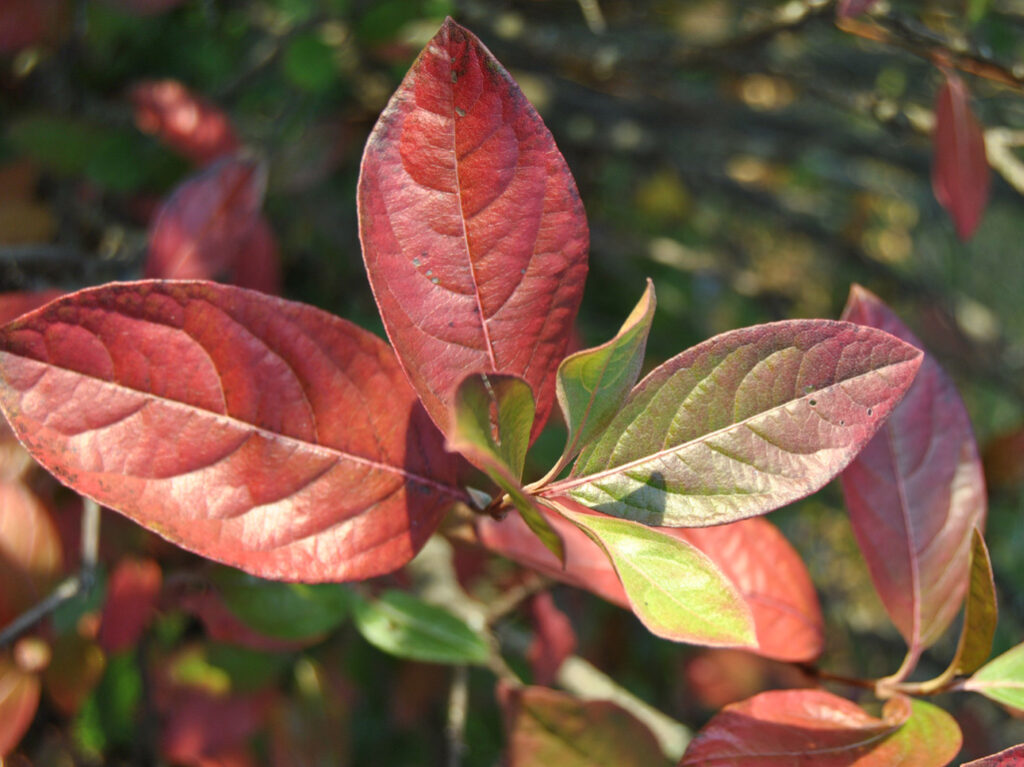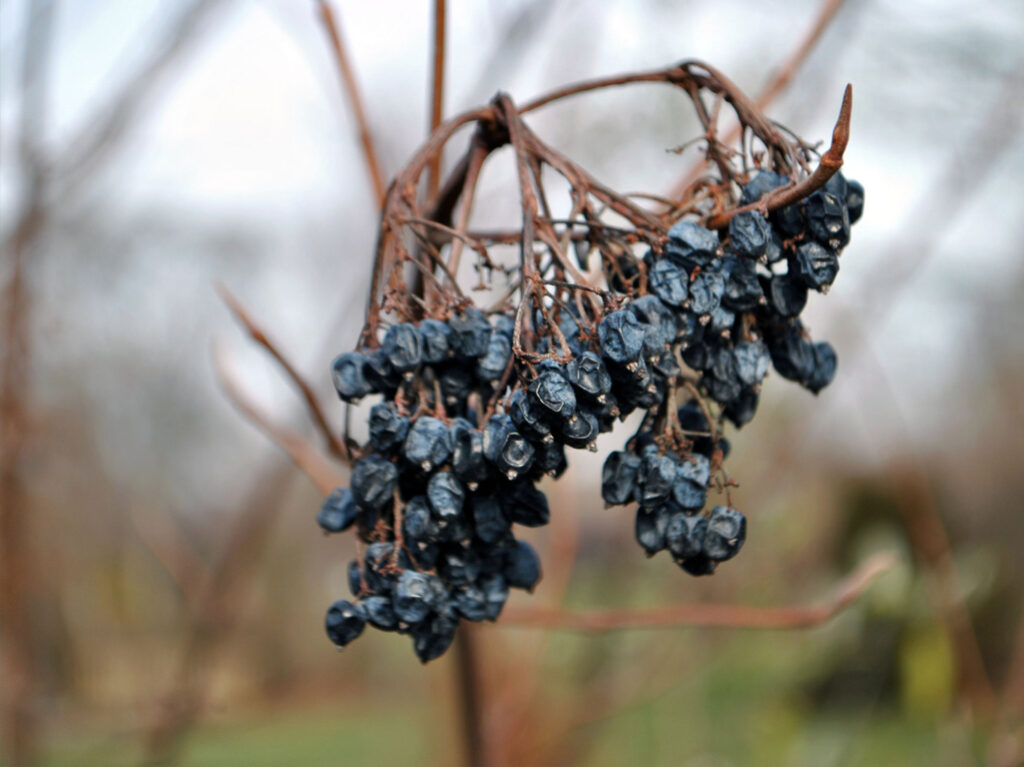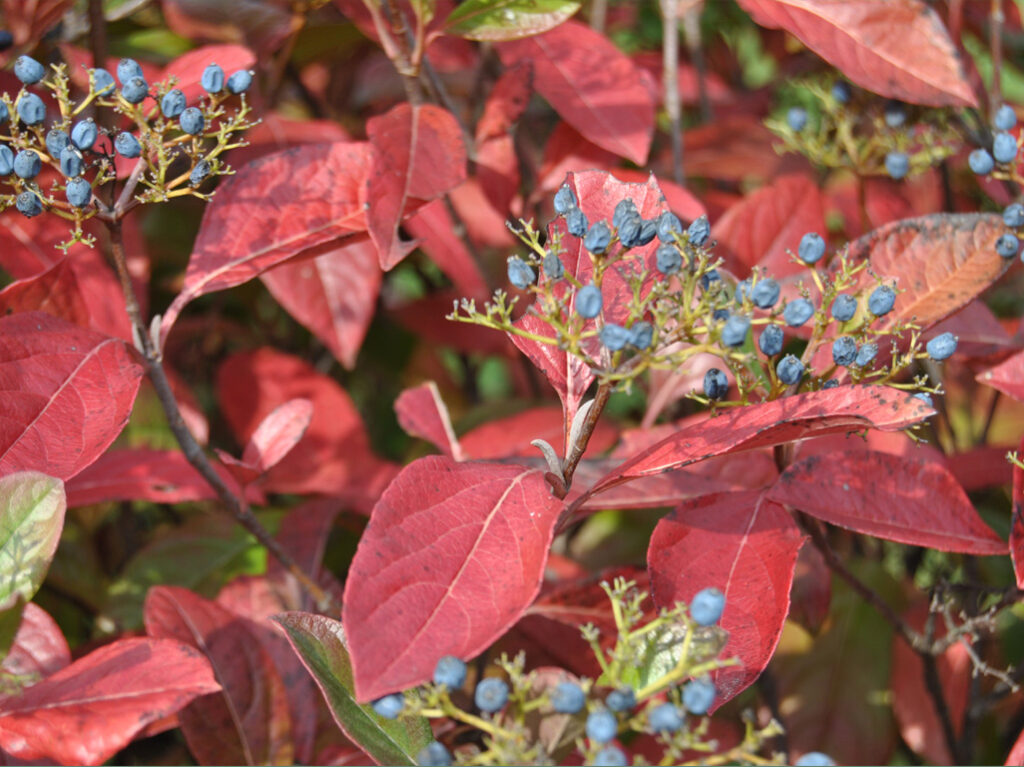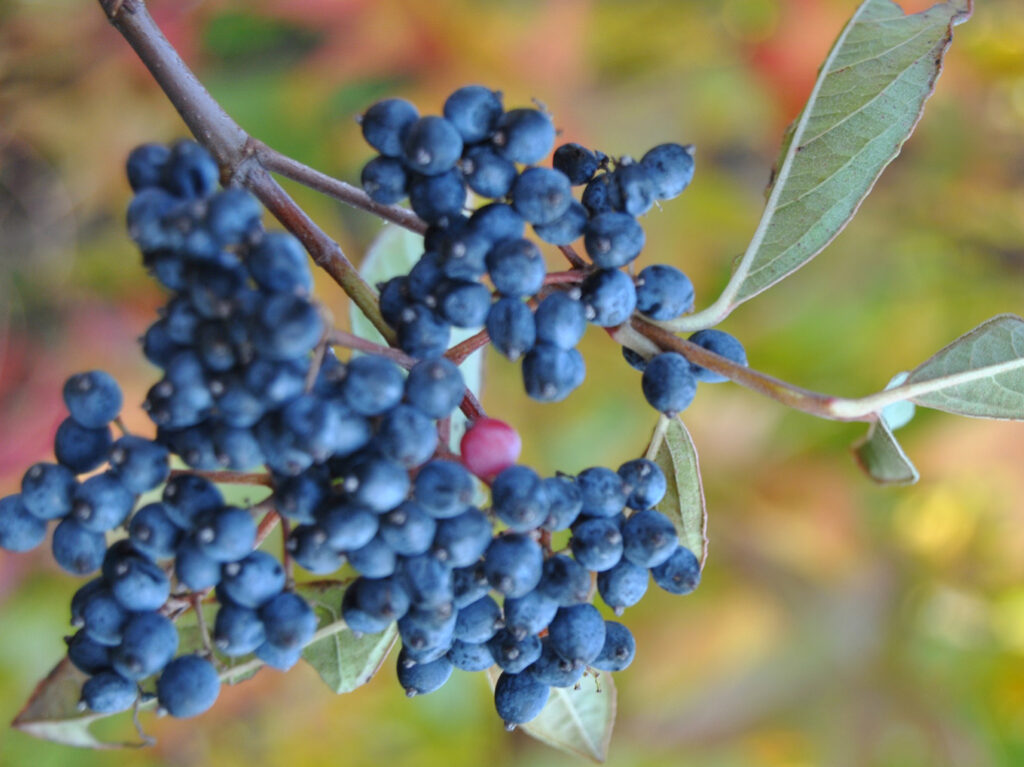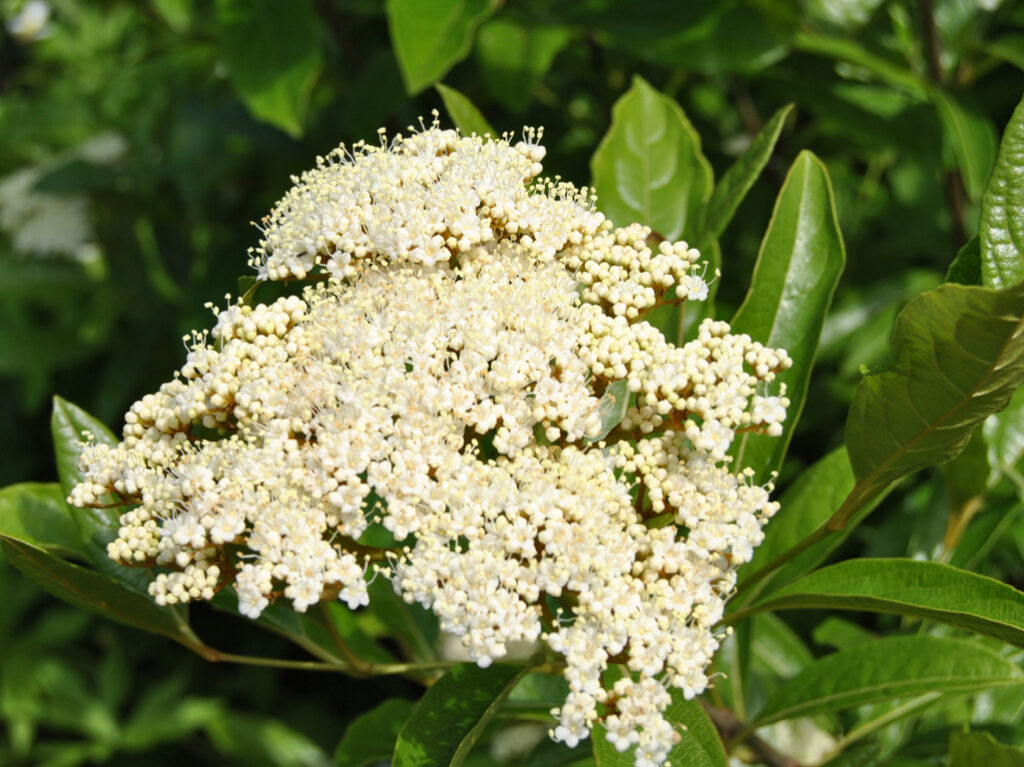
Viburnum nudum ‘Winterthur’
Common Name
Winterthur Smooth Witherod Viburnum
Family
Adoxaceae (Moschatel Family)
Tree or plant type / form
Rounded, multi-stemmed, upright-spreading, deciduous shrub
Landscape Use
Can be used a single specimen, in a mass planting, or as a deciduous hedge. It is also useful in natural, woodland plantings and is a good option for low spots and the edges of water gardens, streams, or ponds.
Season of interest and/or other ornamental feature(s)
Spring through fall
Size at Landscape Maturity
‘Winterthur’ tends to be a smaller shrub than seedling-grown V. nudum, reaching 6-8 feet tall and 4-6 feet wide in 10 years.
Light exposure
Full sun to part shade
USDA Hardiness zones
5 – 9
Origin / Native locale
Native to low woods, swamps, and bogs in the eastern and southeastern U.S. ‘Winterthur’ is an improved, compact cultivar introduced by Winterthur Museum, Garden & Library in northern Delaware.
Wildlife Value (incl. pollinators)
Potential host plant for the spring azure butterfly and hummingbird clearwing moths. The berry-like drupes are eaten by multiple birds.
Soil Type & Drainage
Prefers moist soils but is tolerant of a variety of soils.
Tolerances
Not typically browsed by deer or rabbits.
Leaf Description
Glossy, elliptic to oblong-lanceolate dark green leaves measure 3-5 inches long. Foliage becomes an attractive maroon to red in fall.
Bloom Time in Northeast Ohio
June
Flower Description
Individual creamy white florets are borne on showy, flat-topped clusters (cymes) 2-4 inches across.
Cone / Fruit
Berry-like drupes change from green to pink to light blue as they mature, finally becoming blue-black in fall. As with many viburnums, fruit production is best when multiple shrubs of the same species are sited nearby.
Available at
Secrest Arboretum Plant Discovery Days and selected local nurseries
Use the Secrest Aboretum Explorer to find locations where this plant is located on the Wooster campus.
